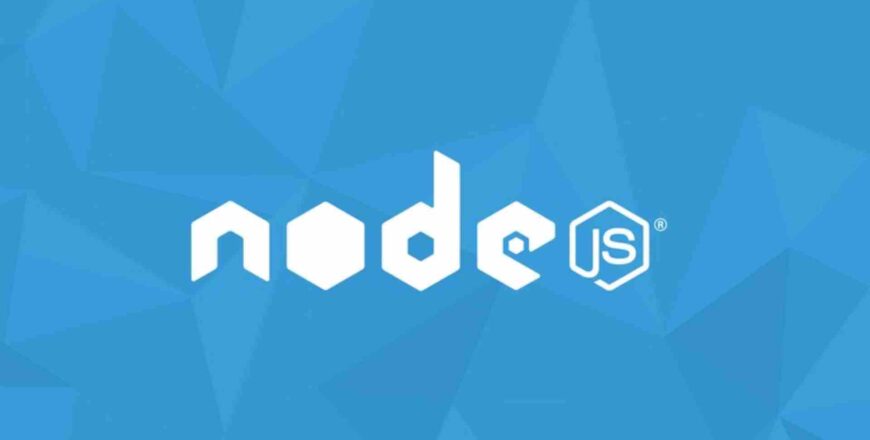The Complete Node.js Developer Course (2nd Edition)
- Description
- Curriculum
- FAQ
- Reviews

This course was just updated to cover Node version 9 & ES7 Async/Await.
—
Have you tried to learn Node before? You start a new course, and the instructor has you installing a bunch of libraries before you even know what Node is or how it works. You eventually get stuck and reach out to the instructor, but you get no reply. You then close the course and never open it again.
Sound familiar?
I created this course to be what I wanted when I was learning Node.
The Complete Node.js Developer Course 2 covers the fundamentals of Node before diving deep into great tools like Express, Mongoose, and MongoDB.
The entire course is based around a single goal: Turning you into a professional Node developer capable of developing, testing, and deploying real-world production applications.
The best way to learn Node is by building Node apps.
From the very start you’ll be programming every project and working through challenges that I’ve designed to reinforce what you’ve learned. This will give you the hands-on experience necessary to be able to create and launch your own project once you’re done.
You’ll be building four projects:
- A note-taking app to get your feet wet
- A weather application that interacts with Google Maps and Dark Sky API
- A to-do REST API complete with user accounts and authentication
- A real-time chat app with a client-side companion
By the end, you’ll be able to take what you’ve learned and launch your own Node application.
When learning, learn the latest.
I work to keep this course full of the most up-to-date Node material out there. This course is compatible with Node.js version 8, the newest Node version available.
You’re getting access to hot-off-the-press features.
Everything you need comes in one easy-to-use package.
You can stop worrying if you’re learning the right skills to build an app or land a new job. I’ve curated all the tech that’s essential to building real-world apps. I’ve mapped out everything in a comprehensive, easy-to-follow package designed to get you up and running in a few weeks.
There’s no better time to learn Node.
According to the 2016 Stack Overflow Survey, Node is in the top ten for back-end popularity and back-end salary, with an average salary of $85k. This means more jobs and more opportunities for you.
You might get stuck. But I’m here to help.
There’s nothing worse than getting five hours into a course, getting stuck, and not getting the help you need to continue.
I’m in the Q&A everyday to help you get unstuck. I reply to every question to get you back on track.
Don’t take my word for it. Check the reviews and see what other students are saying.
“Any questions people seem to have are answered swiftly, clearly, and often with examples posted on GitHub. Even when the questions asked are out of the scope of the course Andrew seems to come up trumps.” – Adam Tait
“This is amazing. What’s even better is the instructor answered all the questions I asked.” – Pak Chu
“The real value in this course is Andrew; he is not just a great teacher, but also he’s quick to answer questions and provide feedback.” – Nick Hester
I guarantee this is the most up-to-date and engaging Node course available, and it comes with a 30-day money-back guarantee.
During eight chapters you’ll learn:
- Node.js
- Npm
- Asynchronous programming
- ES6/ES7
- MongoDB
- Express
- Socket.IO
- JWT Authentication
- Mongoose
- Application deployment with Heroku
- Version control with Git
- GitHub
- REST API Design
- Code testing
- Debugging
- Mocha
- Many more tools
- I can’t wait to see you on the inside!
– Andrew
-
8Section Intro
-
9Using Require
-
10Requiring Your Own Files
-
11Using 3rd Party Modules
-
12Restarting App with Nodemon
-
13Getting Input From User
-
14Simplified Input With Yargs
-
15Working With JSON
-
16Adding and Saving Notes
-
17Refactoring For Reusability
-
18Removing a Note
-
19Reading Notes and Reusability
-
20Debugging Node.js Applications
-
21Debugging via Chrome Dev Tools
-
22Listing Notes
-
23Requiring Arguments and Advanced Yargs
-
24Arrow Functions
-
25Section Intro
-
26Async Basics
-
27Call Stack & Event Loop
-
28Callback Functions & APIs
-
29Pretty Printing Objects
-
30What's Makes up an HTTP Request?
-
31Encoding User Input
-
32Callback Errors
-
33Abstracting Callbacks
-
34Wiring Up Weather Search
-
35Chaining Callbacks Together
-
36Intro to ES6 Promises
-
37Advanced Promises
-
38Promises Quiz
-
39Weather App With Promises
-
40Extra Features
-
60Section Intro
-
61Installing MongoDB and Robomongo (Mac, Linux)
-
62Installing MongoDB and Robomongo (Windows)
-
63Building a NoSQL Vocabulary
-
64Connecting to Mongo and Writing Data
-
65The ObjectId
-
66Fetching Data
-
67Setting Up The Repo
-
68Deleting Documents
-
69Updating Data
-
70The Mongoose ORM
-
71Setting Up Mongoose
-
72Validators, Types, and Defaults
-
73Installing Postman
-
74Resource Creation Endpoint - POST /todos
-
75Testing POST /todos
-
76List Resources - GET /todos
-
77Testing GET /todos
-
78Mongoose Queries and ID Validation
-
79Getting an Individual Resource - GET /todos/:id
-
80Testing GET /todos/:id
-
81Deploy API to Heroku
-
82Postman Environments
-
83Delete a Resource - DELETE /todos/:id
-
84Testing DELETE /todos/:id
-
85Updating a Resource - PATCH /todos/:id
-
86Testing PATCH /todos/:id
-
87Creating a Test Database




